

William Stopford
2025 Chevrolet Corvette Z06 review
2 Months Ago
The 911 Turbo S is slow. Words you'll never hear uttered. But, with every new model comes more pace and agility – does the 992 live up to the heritage of Turbos past?
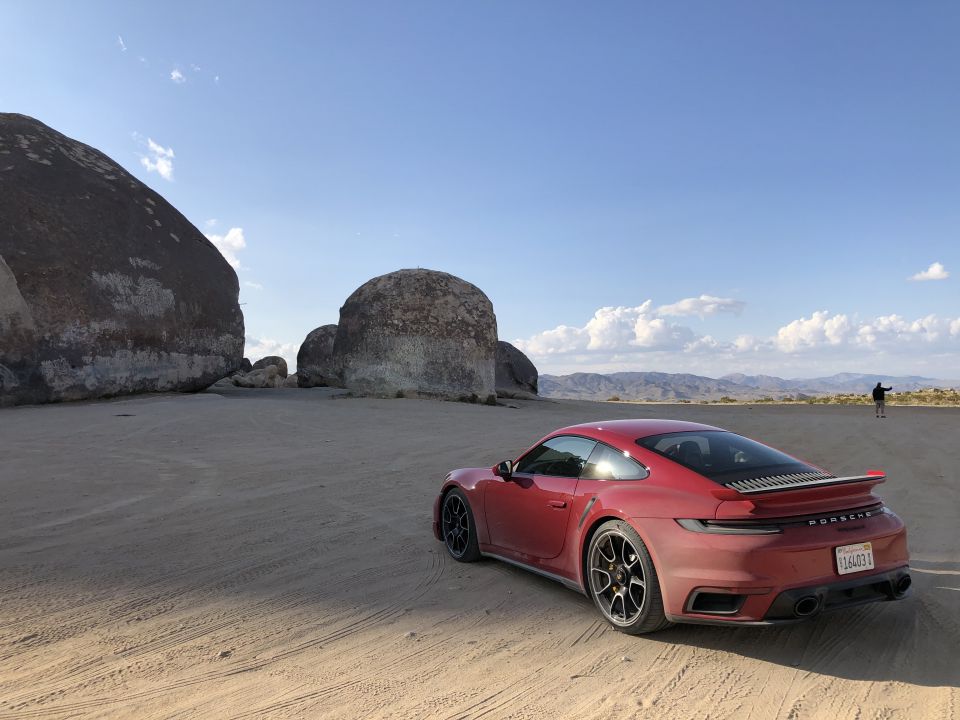

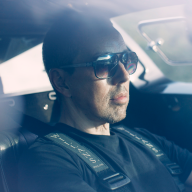
Overseas Editor
New from
$229,100
excl. on-roads

Overseas Editor
New from
$229,100
excl. on-roads


Overseas Editor
New from
$229,100
excl. on-roads

Overseas Editor
New from
$229,100
excl. on-roads
Quickly see how this car stacks up against its competition. Select any benchmark to see more details.
Where expert car reviews meet expert car buying – CarExpert gives you trusted advice, personalised service and real savings on your next new car.
There wasn’t much wrong with the last, Porsche 991-based Turbo S. First there was the speed: a 205mph top speed allied to a blink-and-you’ll-miss-it run to 60mph (97km/h).
Then there was the AWD grip that would let it drive up a wall. And rounding it all off was a driver environment you could sit in for hundreds of miles without complaint.
So there didn’t appear to be a huge amount this new 992-based version could improve upon. But appearances can be deceiving. That assumption lasted exactly 10 seconds or less in the new car.
It’s not just a bit faster, it doesn’t just have appreciably better handling – it utterly obliterates the 991 car.

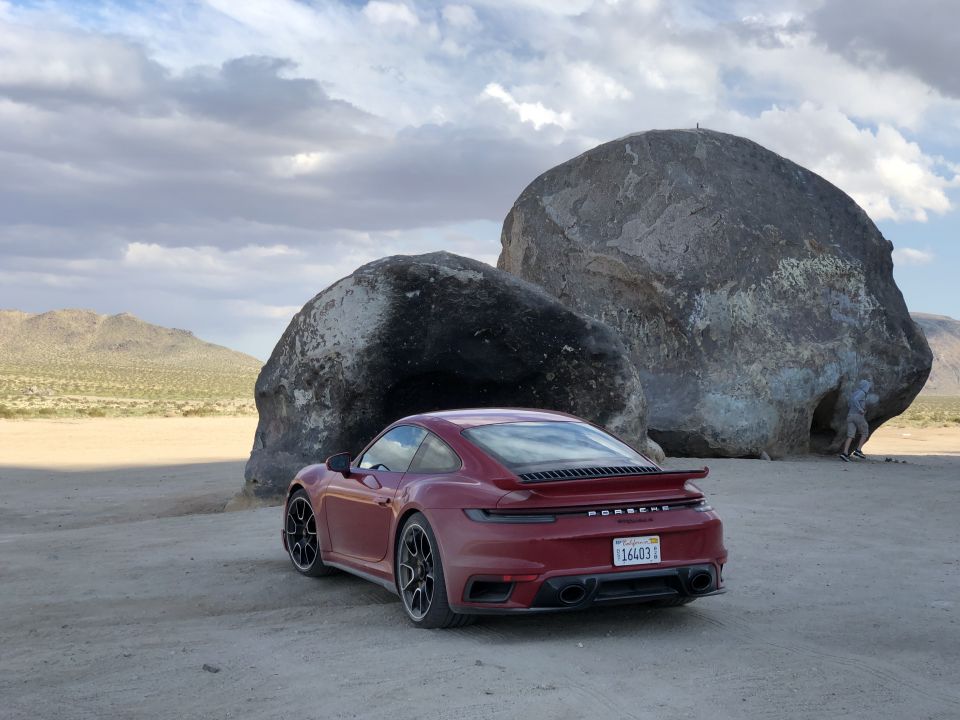
The numbers are better – it’s up 51kW and 50Nm for 2021; only the top speed remains the same – but they are merely half the story. It’s the new level of control plus the eerie chassis calmness that gives you the confidence to dig deep into the car’s apparently bottomless performance that’s the real news here.
While some will bemoan this loss of traditional Porsche 911 character – taming the car originally and correctly nicknamed the Widowmaker has been one of the Turbo’s legacies – the car needed to move forward to stay ahead of the competition. However, the swap to the 992 platform has not just improved the car. It has completely re-invented it.
With cars like the new GT3, GT2 RS and others still to come, the Turbo S’s job is not to be the most engaging or racy, rather an air-conditioned cruise missile. One that is uniquely capable of carrying two people and all their luggage to their destination wherever that might be and in whatever conditions.
But that hasn’t stopped it from being so deceptively fast that you will always arrive early – even when you leave late.
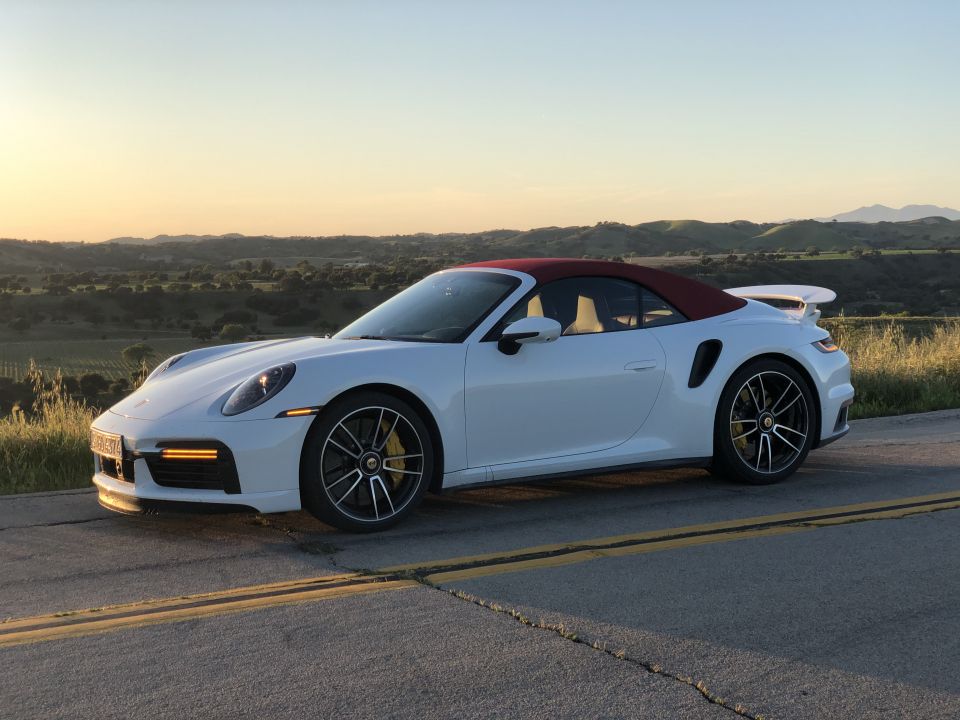
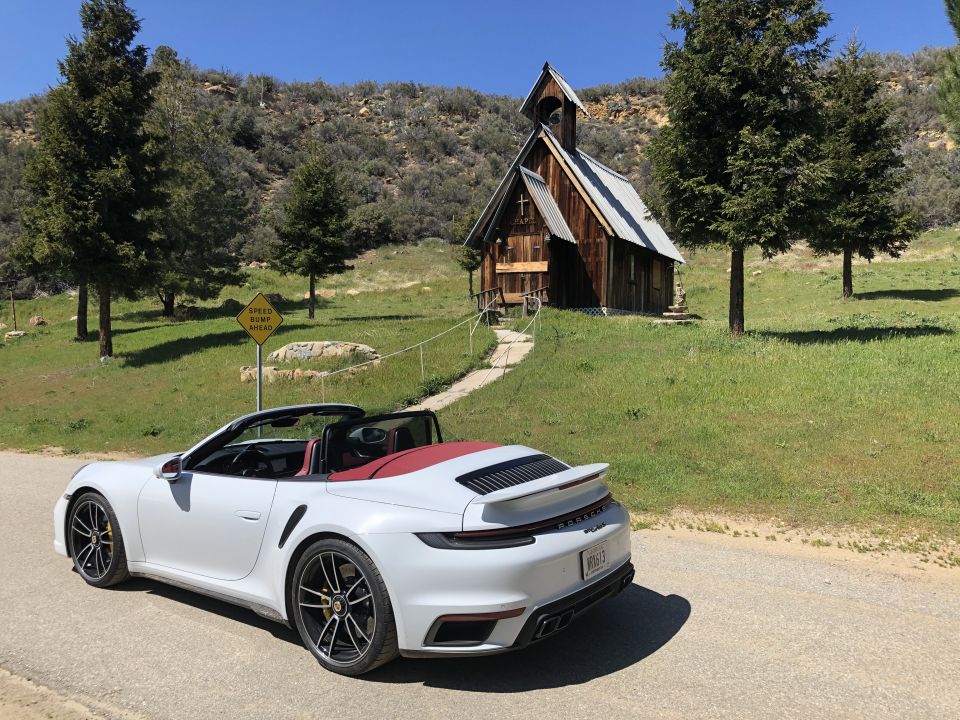
It’s not perfect, though. There are some oddities around the cabin for starters. Sitting the correct distance from the steering wheel, the two outer screens on the central dash are completely obscured by the wheel and your hands. Then there’s that bizarrely stubby gear selector thing which makes the car look like it has been neutered. Plus the centre console which is two, feature-free strips of plastic. Expected more in this range topper.
And then, for all the speed, there’s that diminished engagement. While that’s perfect for reeling off the kilometers at Vmax on the autobahn, it reduces some of the finer car control moments while you’re pile driving along a canyon road.
The good news here is twofold. One, there is a Lightweight Package coming for the coupe, which features all sorts of goodies such as lightweight glass, a sports exhaust, rear seat delete and a number of other details. So that should inject a little more noise and fury into the car – and saves 30kg of the 40kg the new car has gained over its predecessor.
And two is the all-new Cabriolet version of the Turbo S. Even though the coupe is numerically faster everywhere, it’s this rag-topped version which elicits the most thrills. Just by peeling off the panel-bow magnesium-framed roof – it takes 12 seconds in both directions – gives a dramatically enhanced sense of speed and engagement.
It’s so good that, for the first time ever, I’d understand why someone bought the Cabrio over the Coupe.
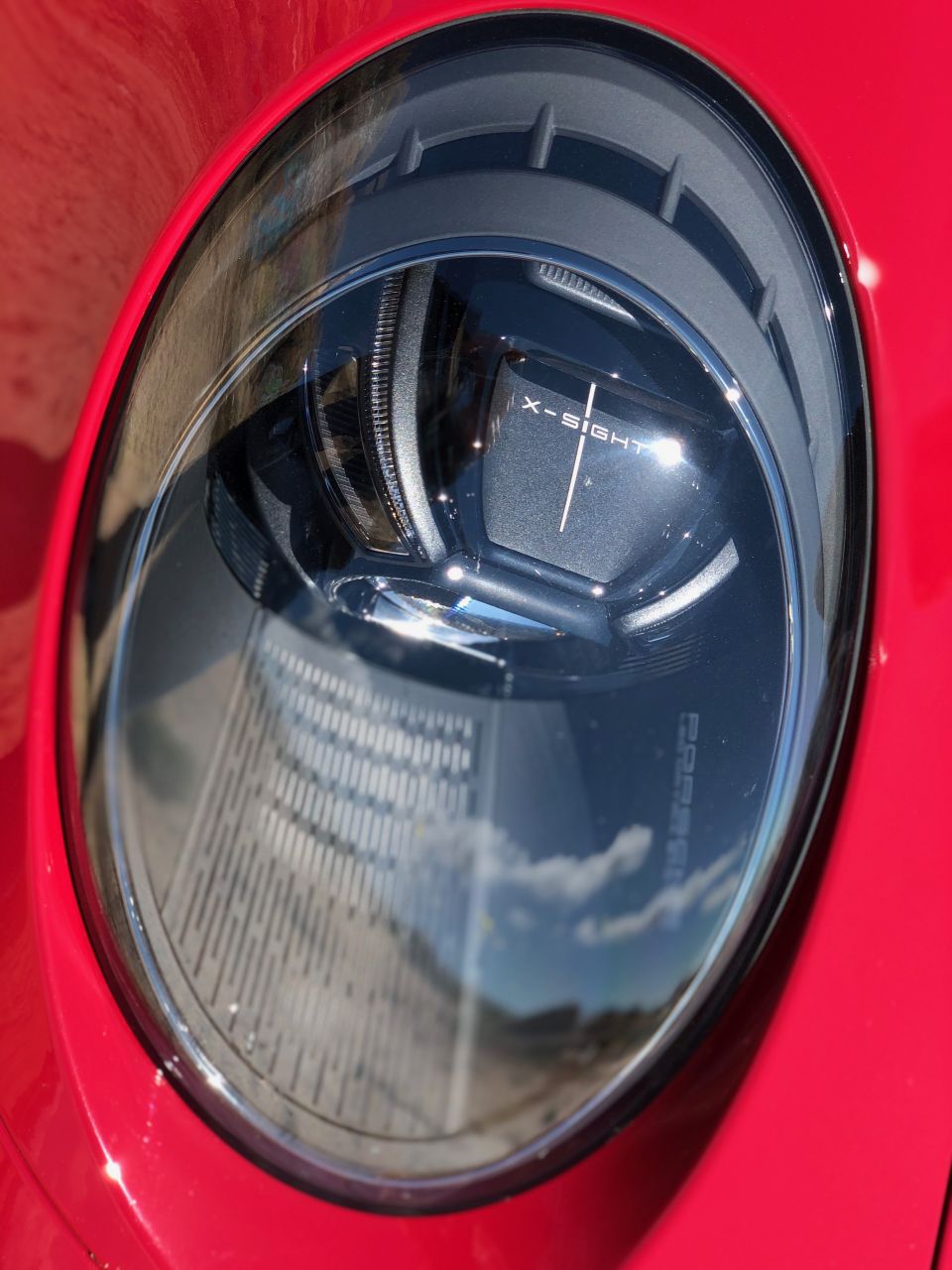
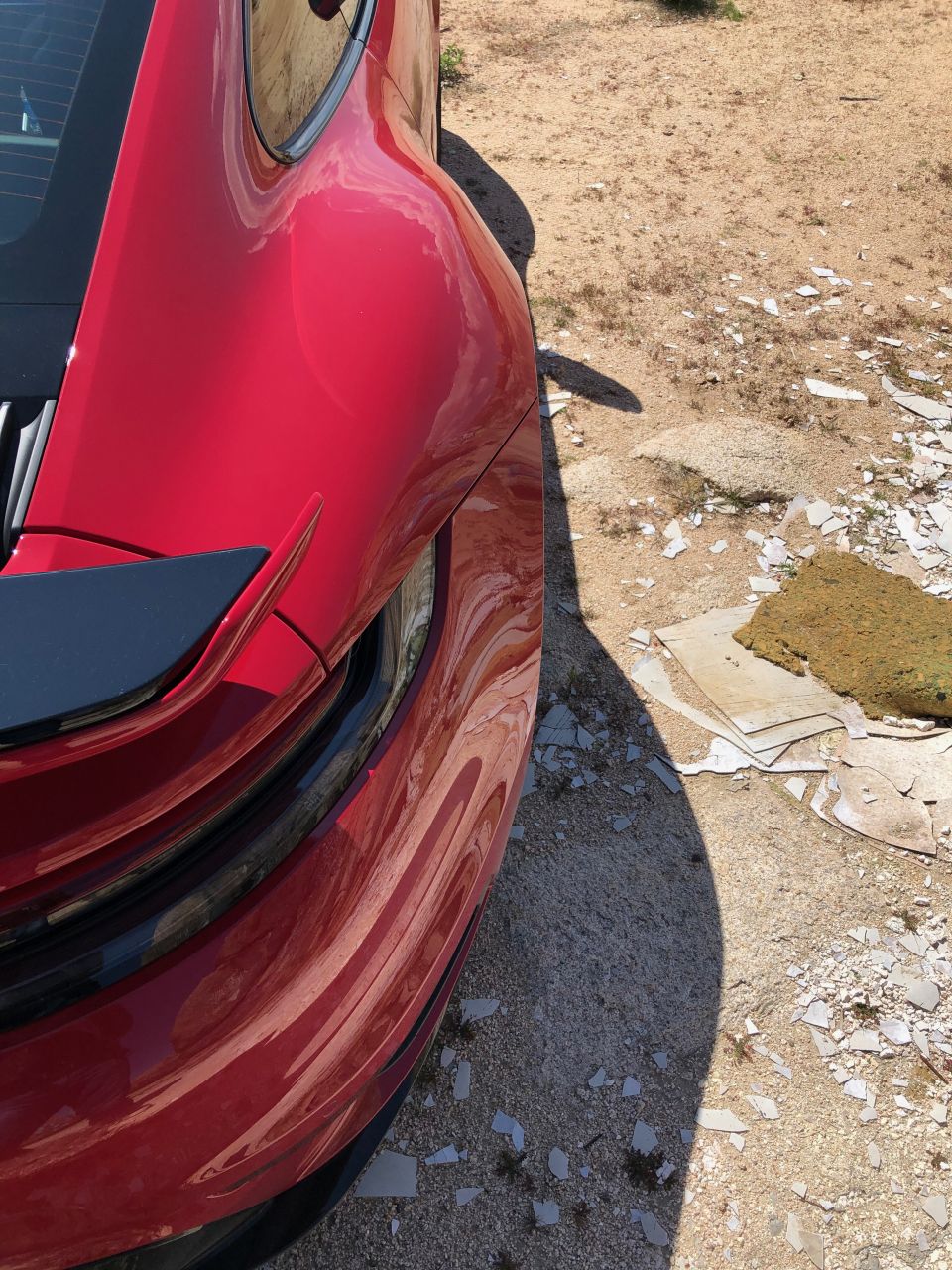
Porsche’s all-new 992 911 range kicks off from $236,700 before on-road costs for the 911 Carrera, with the range capping off with the 911 Turbo S Cabriolet.
The Porsche 911 Turbo S Coupe is $473,900 before on-roads. The Porsche 911 Turbo S Cabriolet on the other hand is a smidge under half a million dollars at $494,900 before on-road costs.
So right in the same ballpark as the equivalent Ferrari or McLaren – a great buying dilemma to have.
Buy your new car without the stress. It's fast, simple and completely free.

Great service from Travis and team, second time I have used this business would not hesitate to recommend them to anyone
Craig C.
Purchased a Ford Ranger in Sunshine Coast, QLD
CarExpert helped Craig save $7,224 on his Ford Ranger, now let us save you on your next new car.
Get your BEST priceBefore you start ticking the boxes in the configurator, there’s plenty packed into the Turbo S’s bulging flanks – the widest ever on a production 911 at 1900mm at the rear.
And it’s not just the width that’s grown. The track is now 42mm wider at the front and 10mm broader at the rear. Overall length is 28mm longer than the outgoing Turbo S. The 40kg weight increase is thanks to the new PDK gearbox, the bigger wheels – 20s on the front, 21s on the back – a front axle transmission cooler and a fuel particulate filter.
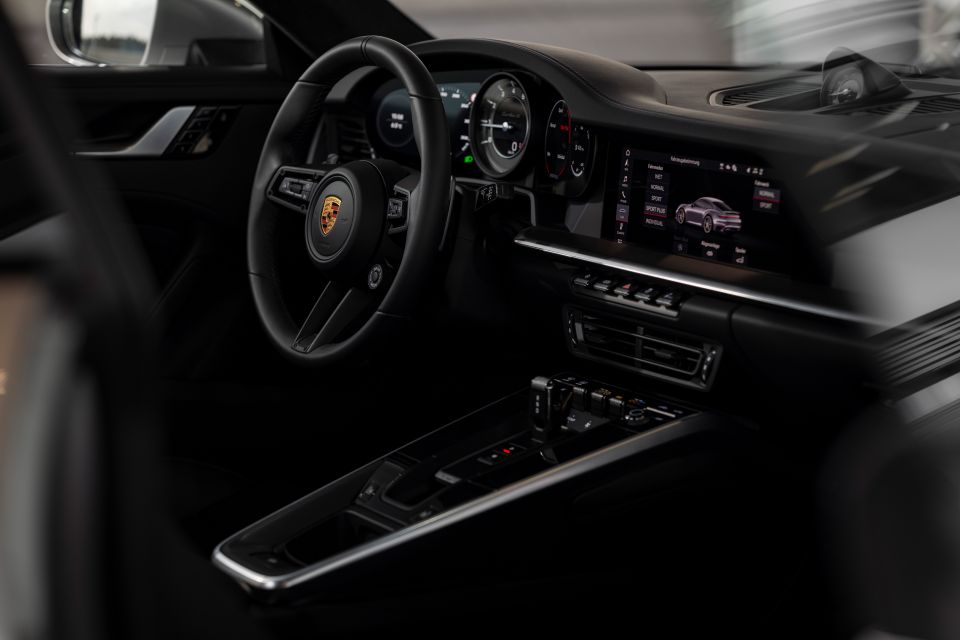
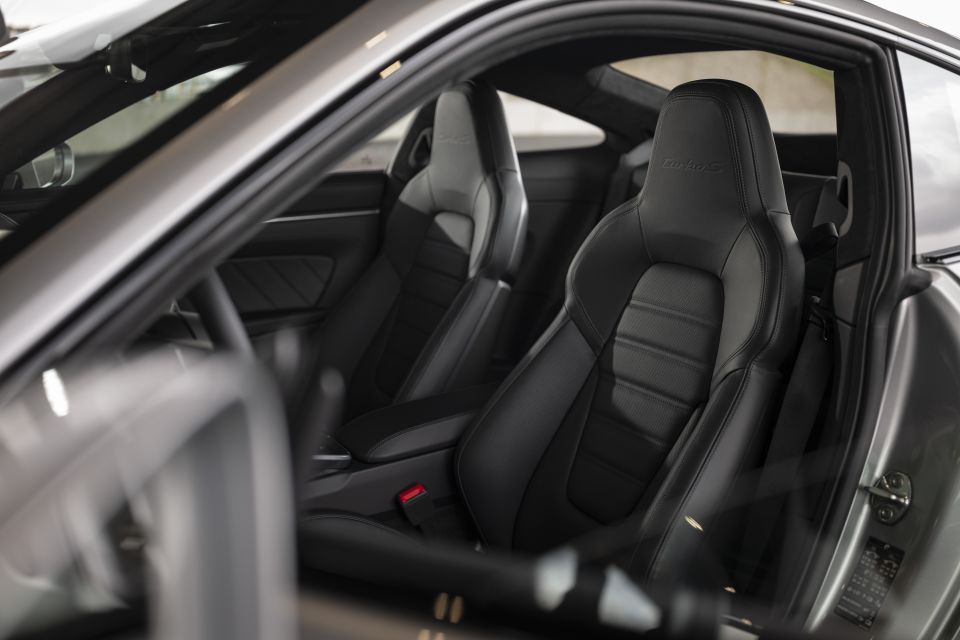
The active aero which debuted on last year’s car has also been updated. There are now shutters on the front grille, plus the pneumatic front spoiler extends an extra 10mm.
To balance that out the CFRP rear wing has an eight per cent larger effective area and is around half a kilo lighter. Both the front and rear spoilers now also extend during heavy braking to slow and stabilize the car.
New for 2020 is an extra Wet mode, to add to Normal, Sport, Sport Plus and Individual. Activating Wet mode transfers more torque to the front axle plus a host of chassis and engine mapping tweaks to keep you between the kerbs.
Then there’s the carbon ceramic brakes as standard. While the discs themselves are bigger than before – 420mm front and 90mm rear – it’s the calipers which are the big news. Four piston at the back and 10 – yes, ten – piston at the front.
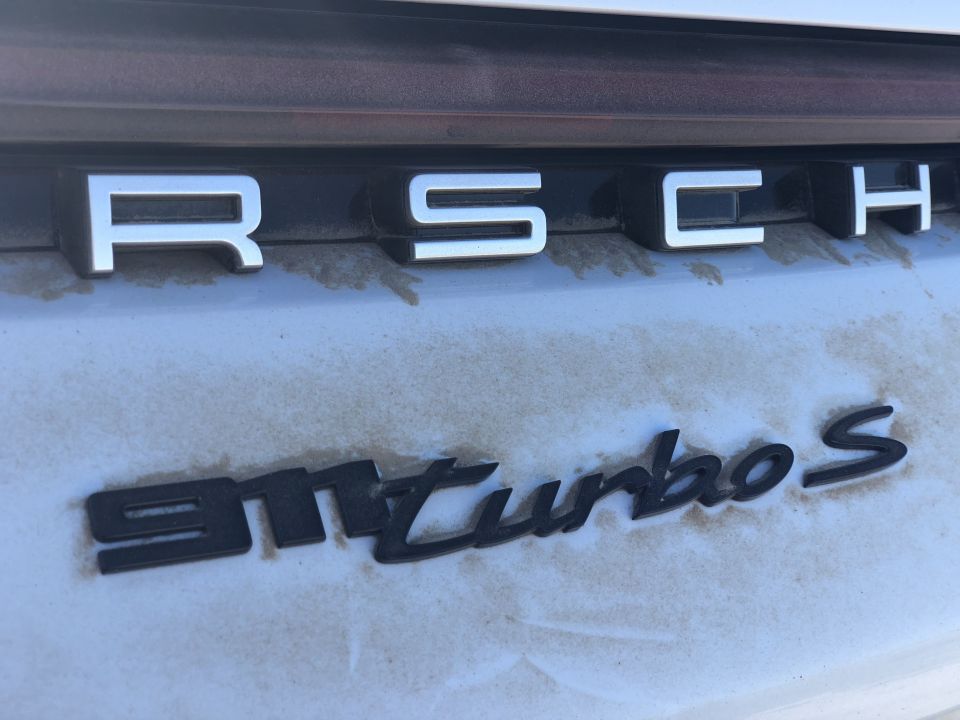
The Cabrio model gets all the above plus a super light and tight roof mechanism. The panel-bow roof structure weighs just 35kg and packs into a tiny 23cm high space right over the rear axle. You’ve had shopping bags heavier and bulkier than this.
The 911 hasn’t been ANCAP tested yet and it’s unlikely that it ever will be tested given how few are comparatively sold to mainstream cars.
The only non-standard piece of safety equipment is adaptive cruise control ($3750), which also includes emergency brake assistance and a visual and audible pedestrian collision warning.

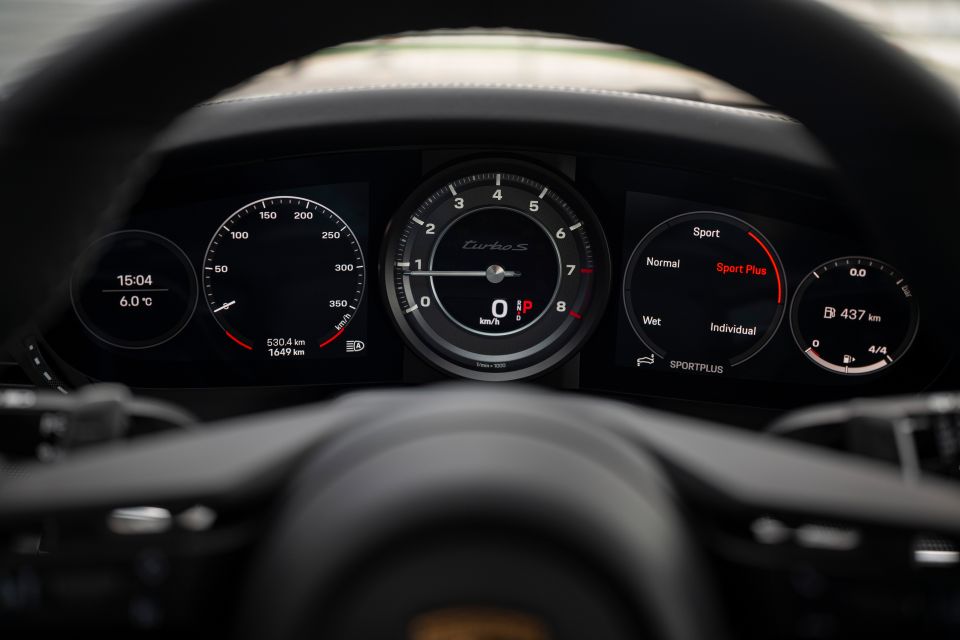
There are two main criticisms of the interior. The two sub screens on either side of the central tacho are obscured by the steering wheel and the driver’s hands, requiring an extended glance away from the road to read.
And the centre console doesn’t feel very special at all. The runt of a gear selector is flanked by two featureless plastic plates, the chassis switches being relocated to a bank of five toggle switches under the 10.9-inch central command screen.
The switch relocation makes sense, but that barren area could do with a better finish – maybe painted metal? – to make that area befitting a car of this cost and quality.
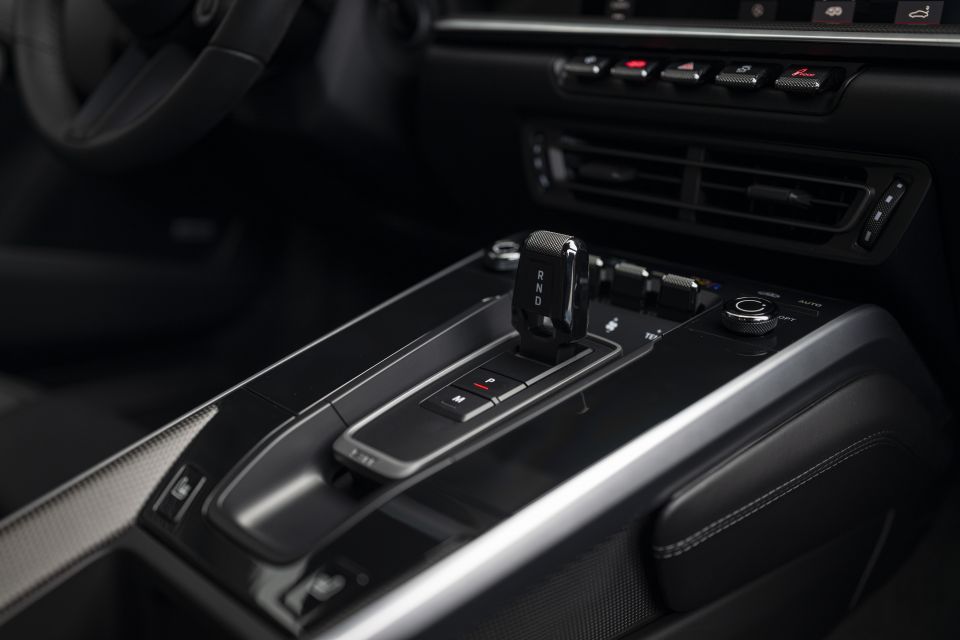
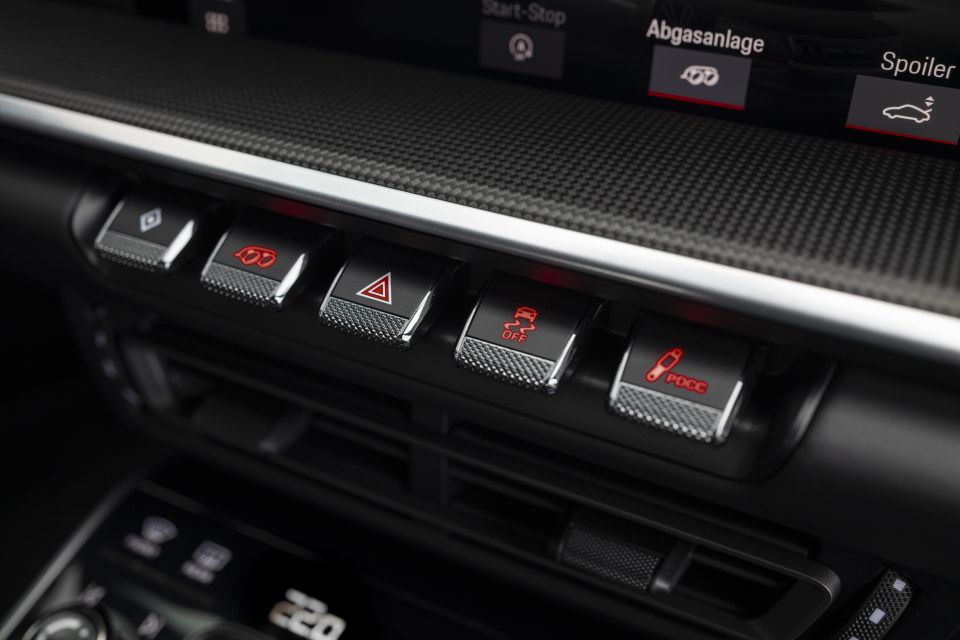
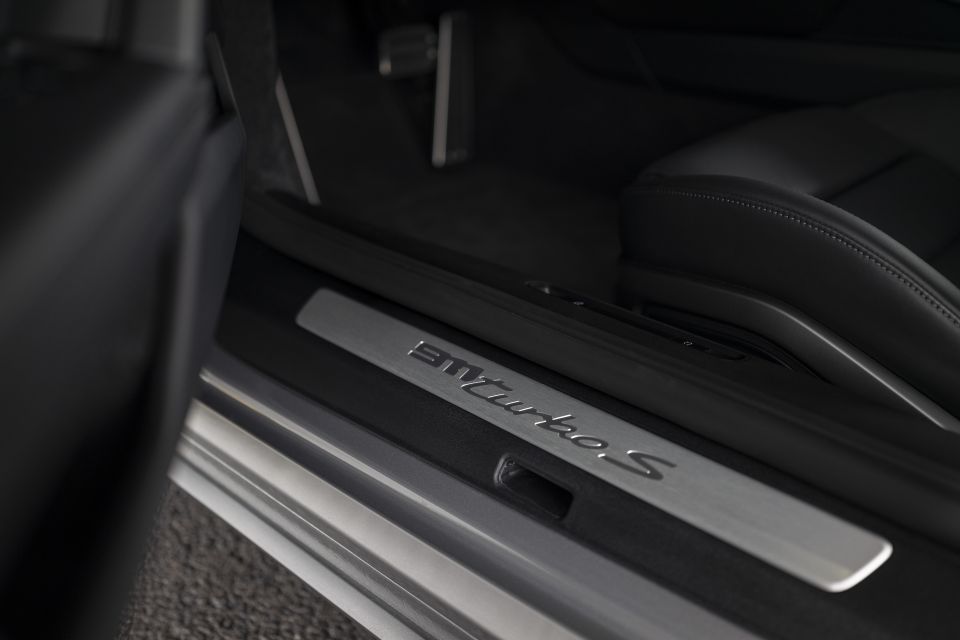
The infotainment system is as high-tech and supremely powerful as the rest of the car. Especially if you spec the 13-speaker 855W Burmeister sound system – the standard Bose system makes do with just 570W and a dozen outlets – which has ear-bleeding power and cut crystal clarity.
The touchscreen has proximity sensors so wakes up before your finger hits it, making adjustments quick and simple. Dig into the system and there are Porsche Connect menus for everything which sync instantly with your phone. So it’s all very much up to par.
The 18-way adjustable seats, featuring a stitching design borrowed from the original 930 Turbo, are superb. The rear folding seats as useful as they have always been. Flatten those down and you can still get three full-sized suitcases back there. Try doing that in any other supercar.
Based on the 991’s 3.8-litre unit, the 2020 Turbo S motor generates the extra power thanks to 5mm bigger turbine wheels and a 3mm larger compressor allied to a new intake system which allows the flat-six to breath through four intakes instead of two.
Max power and torque are now 478kW and 800Nm. Porsche says the focus for the unit was not only the power hike, but also meeting the latest emissions standards, which is why it is now fitted with a petrol particulate filter.
Torque is sent through an eight-speed dual-clutch gearbox with official fuel consumption coming in at 11.1 and 11.3 litres per 100km on the combined cycle respectively for Turbo S Coupe and Turbo S Cabriolet variants.
The claimed net effect of all the changes is improved responsiveness, seamless torque and power delivery and a freer-revving nature.
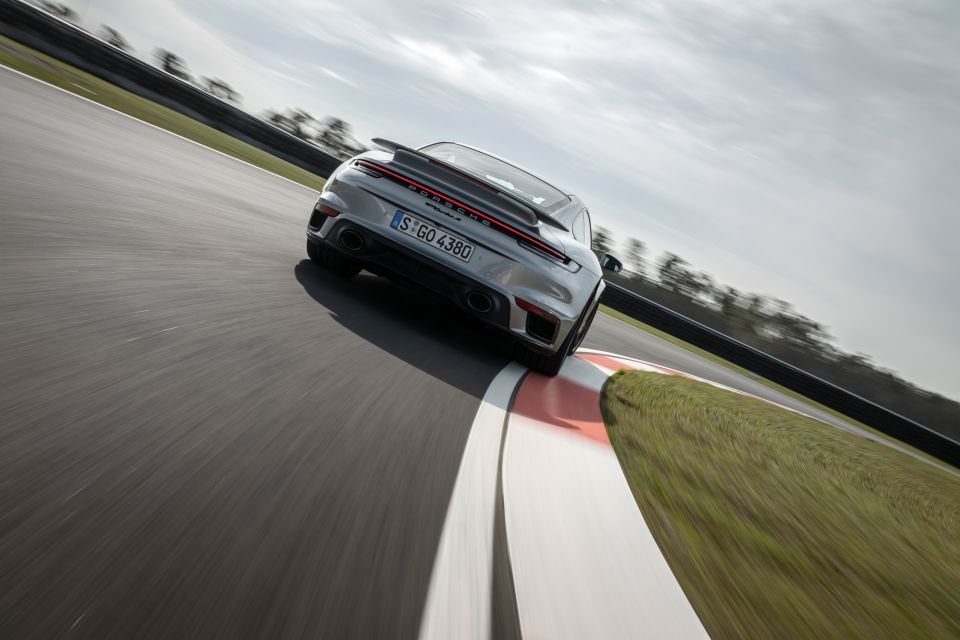
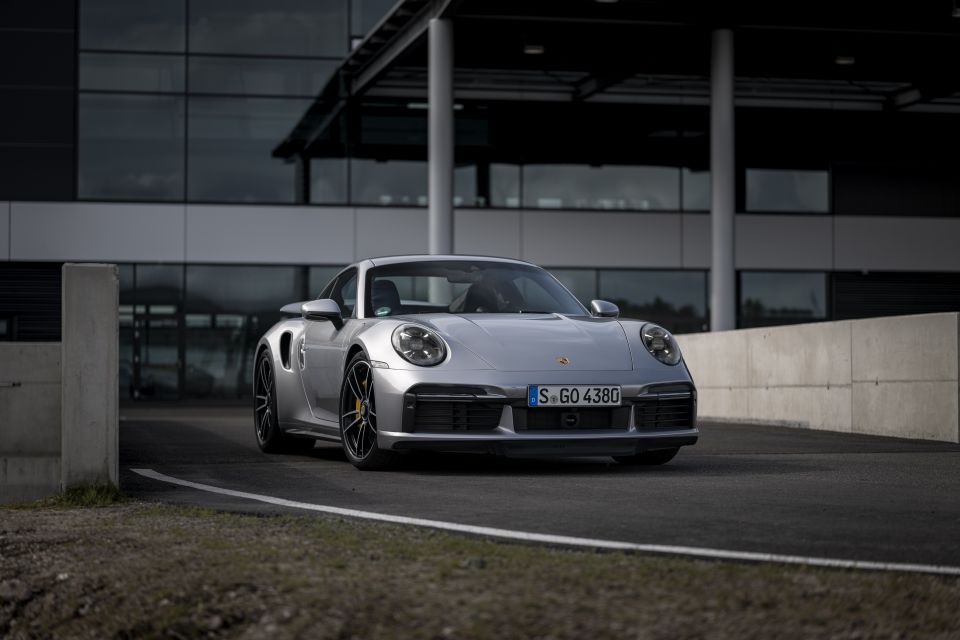
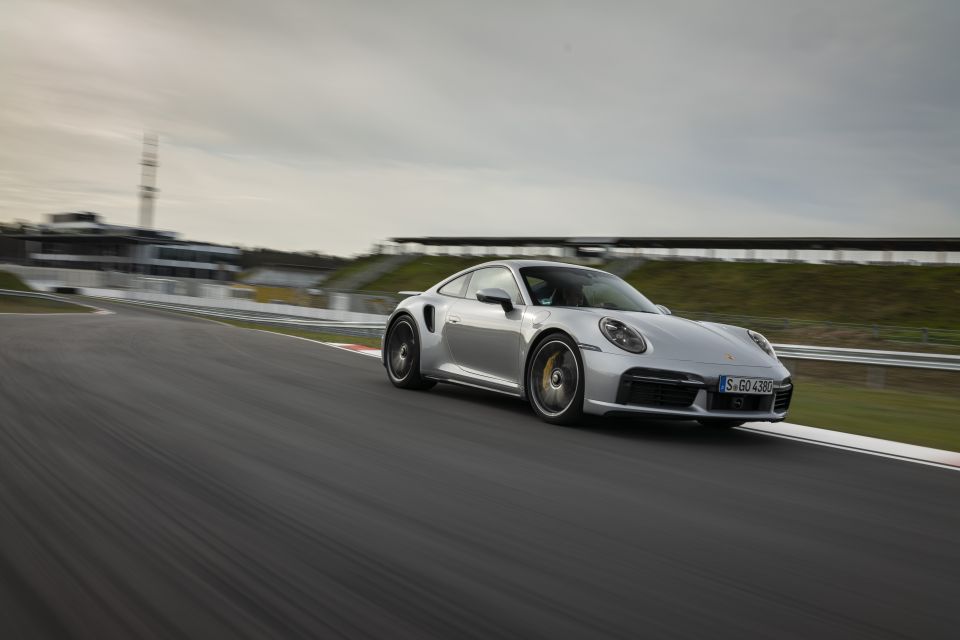
It’s clear all of the Porsche claims are true from the moment you set off. With the seats and seatbelts giving you a hug, the ambient noise lower than usual and the chassis composed and quiet, you can jet to massive speeds with almost frictionless ease.
Pull onto the motorway, adjust the stereo, check your mirrors and, bam, you’re already deep into license-losing territory before you know it. And that’s just in Normal mode. Dial the wheel-mounted switch to Sport and the car wakes up like it just downed a quad espresso.
Go all the way to Sport Plus and the whole car moves to DEFCON 1, the spoiler and wing extending to their limits and the drivetrain feeling like it’s chased the espresso with a bottle of Adderall. There are no steps or wind-ups in the power and torque, it’s just an instant, seamless maglev-like surge to any speed you’d care to mention.
There’s little to no argument from the chassis either. Even with the throttle pinned the Turbo S’s brain channels the power to the road without any of the normal 911 give and take. Just rock-solid thrust into and out of corners which makes you stare at the g-meter in disbelief.
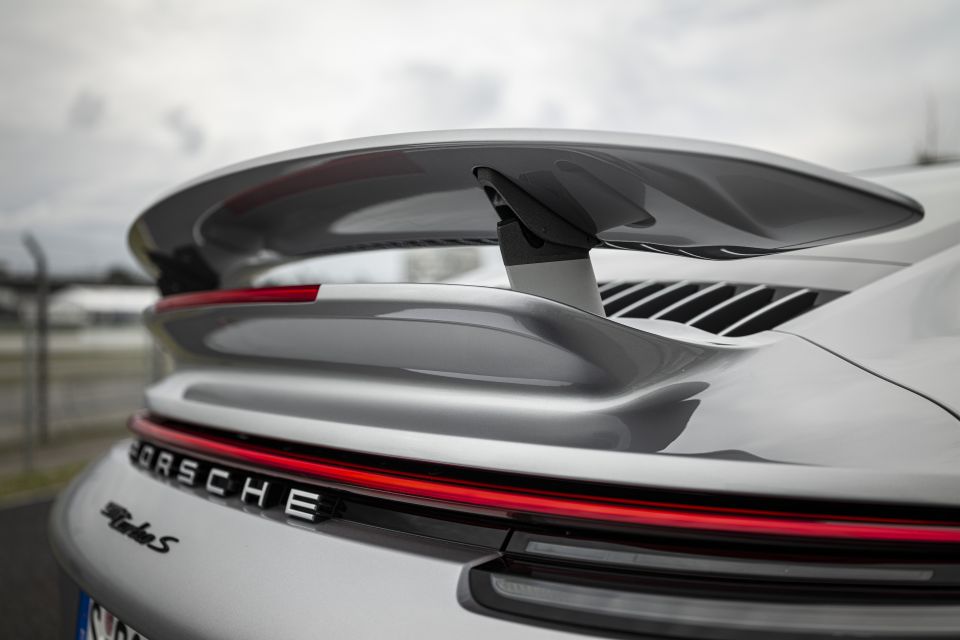
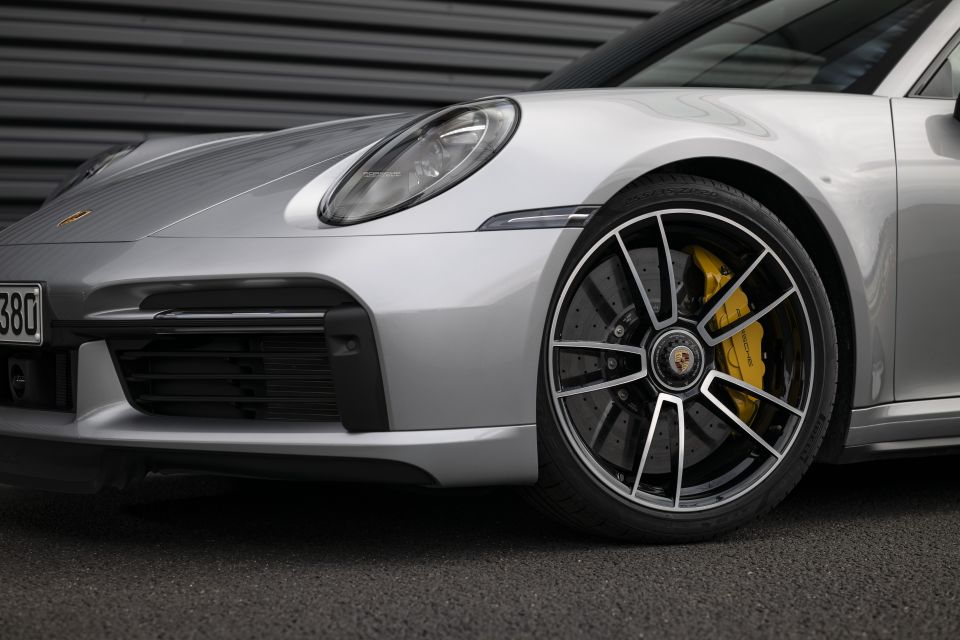
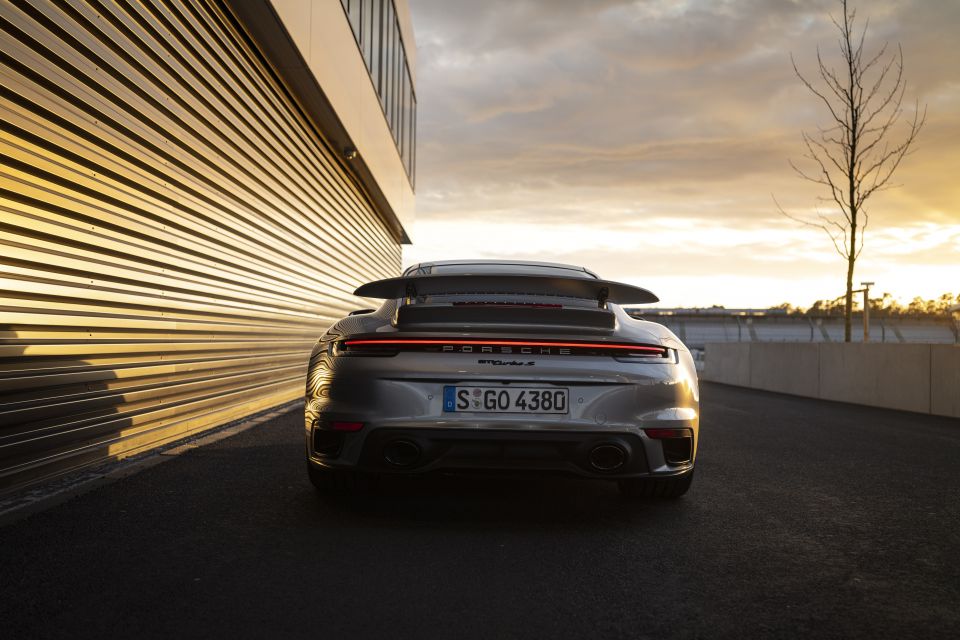
Our test car was fitted with the Active Steering option, which felt a little non-linear in its responses, but was extremely effective on sets of tight switchbacks at making the wheelbase feel half a metre shorter than it is.
But despite all this newfound competence, there is an air of slight detachment from the proceedings which might disappoint some classic Porsche fans. While this trait is wholly appropriate for a car designed as the ultimate 911 executive express, we are still looking forward to driving a version fitted with the Lightweight Package, just to see if that injects back more of the engagement.
An honorable mention here to the Cabrio version which, even with the roof down, handles just as finely as the Coupe yet has just a smidge more in-cabin noise which makes the drive that much more interesting.
There is very little to criticise about the Cabrio’s behaviour. With the roof up, you’d never know you weren’t sitting under a tin top. With it down, you can regulate the airflow so tightly, using the four windows and electric wind deflector, you can use all the car’s performance without creating an in-car hurricane.
If you use all the performance regularly you should expect some hefty tyre and fuel bills. But not much else.
Servicing is every 15,000km or 12 months. Servicing pricing is yet to be announced for Australia.
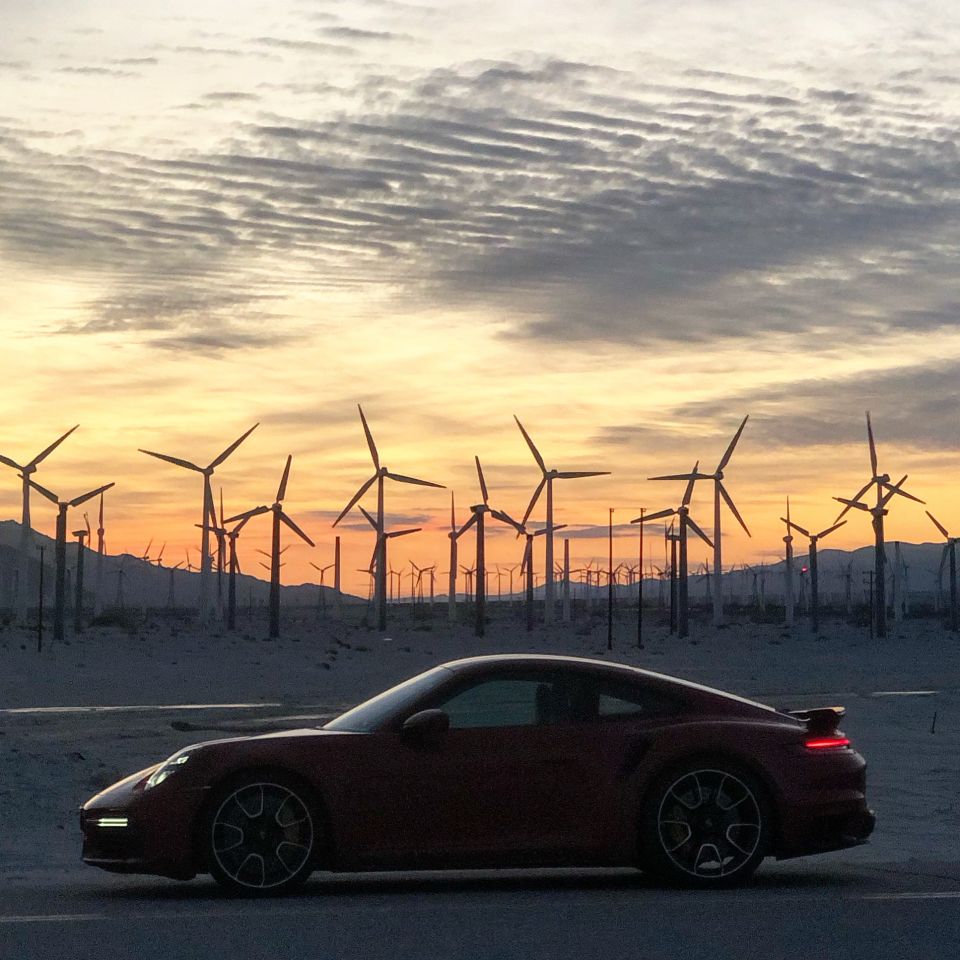
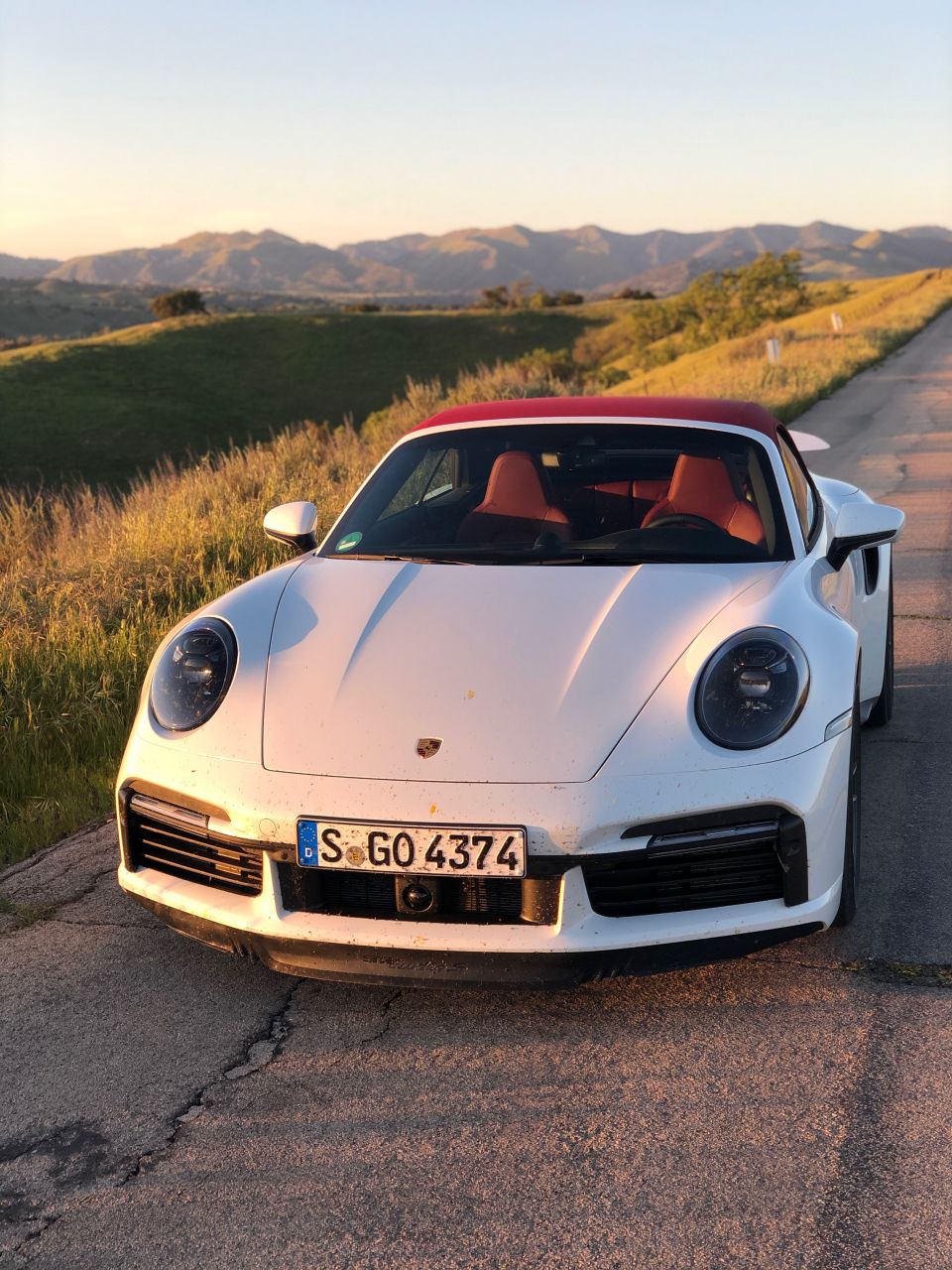
Buy your new car without the stress. It's fast, simple and completely free.

Great service from Travis and team, second time I have used this business would not hesitate to recommend them to anyone
Craig C.
Purchased a Ford Ranger in Sunshine Coast, QLD
CarExpert helped Craig save $7,224 on his Ford Ranger, now let us save you on your next new car.
Get your BEST priceThis new Porsche 911 Turbo S – there will be a regular Turbo added to the range in due course, too – is a towering achievement. To have made an already barnstorming car so much faster, better handling is an extraordinary achievement.
Other than the couple of interior details mentioned above, it’s a better car in every way than the one it replaces – faster, more luxurious, better handling. Almost irritatingly good at everything. The only tiny – and possibly unreasonable – gripes being that we’d like a touch more noise, theatre and steering feel
We know that this is not supposed to be the most beguiling of 911s, rather the most capable. Even so, we’d have to fight with ourselves not to spec the Lightweight Package, or even the Cabrio, to get some of that feeling back. But maybe that’s not the right approach.
If you want the raw, tooth-and-claw savageness of the GT cars, wait for the new GT3 or GT3 RS, both of which are going to be monsters. Buy this Turbo S – in Coupe or Cabrio form – to know that you have the most comfortable and capable 911 ever made. Because that’s exactly what it is.
Where expert car reviews meet expert car buying – CarExpert gives you trusted advice, personalised service and real savings on your next new car.


William Stopford
2 Months Ago
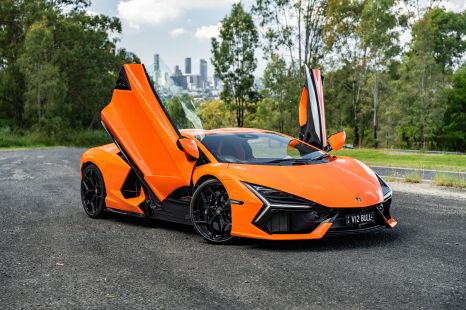

Alborz Fallah
2 Months Ago


James Wong
1 Month Ago


Paul Maric
25 Days Ago


Matt Campbell
16 Days Ago


Damion Smy
8 Days Ago